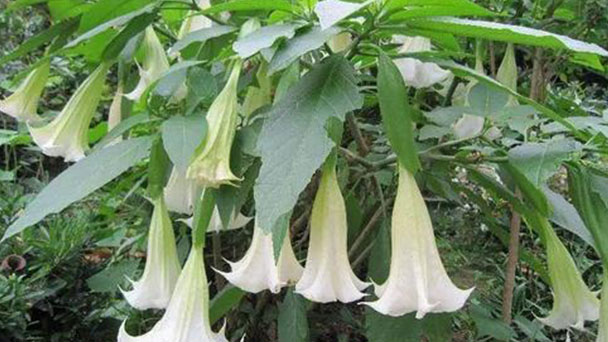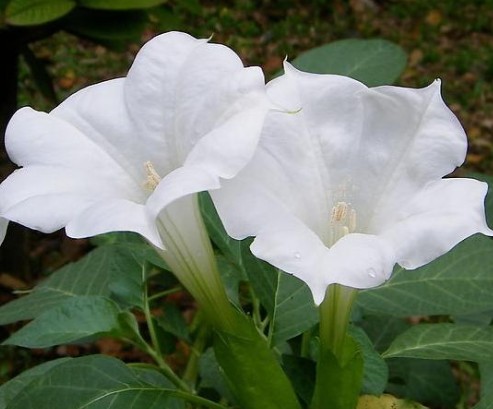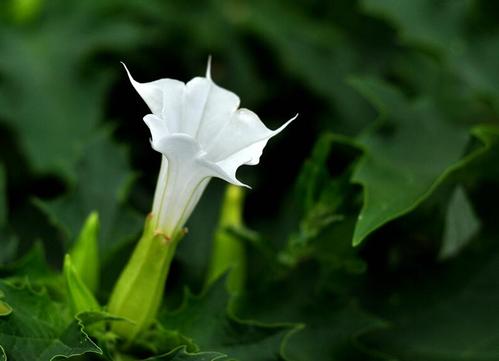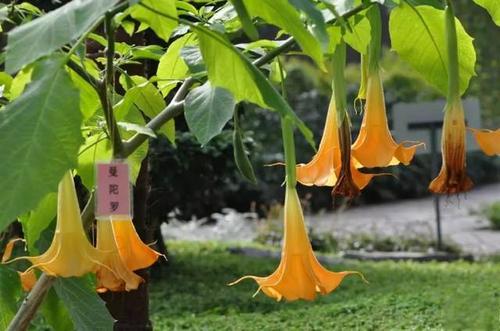How to care for Jimsonweed
Written by Maggie
Dec 22 2020

Jimsonweed (Datura stramonium) is a beautiful, witchy plant that begins blooming in late summer and continues through the first frost. A member of the notorious nightshade family, its more famous cousins include tomato, eggplant, pepper, tobacco, and potato. Most members of this plant family are poisonous, and jimsonweed is no exception. All parts of the plant are toxic, most particularly the seeds. Potent amounts of alkaloid compounds are present, which potentially cause convulsions, hallucinations, and even death if ingested. Here are some caring tips for growing Jimsonweed.

How to care for Jimsonweed
In the process of potted Jimsonweed, it is best to choose 3 parts of sand, 3 parts of humus leaf rot soil and 2 parts of vermiculite fully mixed into cultivated soil. In spring and winter seasons, it can be given enough light, generally placed in the window facing south. Before going out of the room in the spring, you need to change a basin, follow the principle of thin fertilizer applied frequently.
1. Suitable soil for Jimsonweed
Soil environment is an important factor in growing pot Jimsonweed. Potted Jimsonweed shallow root system distribution, generally in the loose, sandy soil fertile, and good drainage can be survival, potted plants can choose 3 of the sand. During three rotten leaves containing humus and blend of the 2 vermiculite fully cultivated soil, add in the pelvic floor 2 cm of coarse sand as a drainage layer.
2. Maintain the environment for Jimsonweed
Like most potted plants, Jimsonweed also likes warm light and avoids direct glare. In summer, it should be moved indoors for shading to prevent burning the flowers and leaves of the Jimsonweed. In the growth stage, it is suitable to grow in an environment of 15-25 ℃.
3. Change basins for Jimsonweed
The growth rate of potted Jimsonweed flowers is fast, especially before and after going out of the house in spring. We should change the pot in time during maintenance, and also appropriate pruning of branches and leaves when changing the pot, mainly to cut off the residual branches and withered roots. After changing the pot, the new growing plants will be more beautiful, the branches and leaves will be more dense.
4. Fertilization requirements of Jimsonweed
Potted Jimsonweed likes mature organic fertilizer. Generally do not use fertilizer, also avoid thick fertilizer, thick fertilizer, mainly to thin fertilizer frequent application as the principle of fertilization. In the growing period, we can apply fertilizer once a week, mature manure, bean cake. In winter , it enters into the dormant period, stop fertilization.
5,. Suitable water for Jimsonweed
The number of watering the Jimsonweed pot varies with the increase of temperature, the higher the temperature is, the corresponding increase in the number of watering, but not too much watering caused by water. In summer it can be watered twice in the morning and evening, every two days or so in spring and autumn watering. In winter watching pot soil dry water should be watered once permeable.
6. Disease of Jimsonweed
Black spot disease is a common disease of potted Jimsonweed, and special attention should be paid to the maintenance. Black spot disease is generally manifested as black leaves, early falling leaves, and eventually make the whole plant die, so we should spray 50% of the special solution every other week before the onset of the disease, lasting 3 to 4 times can be effective.

How to care for Jimsonweed in autumn
In autumn cultivation of Jimsonweed, we need to give it sufficient sunshine, and as autumn weather gradually cools, we need to continuously reduce the amount of water.
1. Get plenty of light for Jimsonweed
The Jimsonweed likes to grow in full sunshine, but the autumn sunshine is not particularly strong, so it can be placed in the sun and carefully maintained. If the lack of light in autumn, it will affect the normal growth of the plant, and may even make the plant grow empty, making the leaves of the Jimsonweed lose their color.
2. Water and fertilizer management of Jimsonweed
Jimsonweed has a certain cold tolerance. Generally, in the process of autumn cultivation, the amount of watering must be controlled. If the climate gradually cools down, the amount of watering can be reduced.
3. Turn the pot and change the soil for Jimsonweed
Generally, the best way to raise Jimsonweed in autumn is to timely turn over the pot and replace the soil for maintenance. In autumn, the plants should be taken out of the pot and a larger container should be selected. In addition, pastoral soil, river sand and organic fertilizer should be mixed to make new pot soil for maintenance, so that the pot soil can provide nutrients in time.
4. Pruning for Jimsonweed
In fact, when Jimsonweed grows in autumn, its branches and leaves can also be pruned appropriately. Firstly, the withered branches, old branches and diseased branches and leaves of the plant can be cut off in time. Then, the luxuriant parts of the plant can be cut off in order to make the plant grow better.

Latest Updated
- Benefits of Bugleweed - 7 Science-backed Health Benefits
- Bugleweed Dangers & Side Effects - Is It Poisonous?
- How to Plant Evergreen Trees - What You Should Know
- When to Plant Evergreens - Grow Guide for Evergreen Trees
- 12 Wonderful Evergreen Shrubs for Your Garden
- 12 Popular Evergreen Plants with Pictures for Beginners
- When And How To Prune A Lilac Bush Like a Pro
- How to Grow & Care for Lilac Vine (Hardenbergia Violacea)
- Japanese Lilac Tree (Syringa Reticulata) Care & Propagation Guide
- Shumard Oak Pros and Cons - What to Know
Popular Articles
- Winter maintenance of Antirrhinum Majus
- How to Grow Terminalia Mantaly Tree
- How to Grow and Care for Crossostephium Chinense
- How to grow Antirrhinum Majus in spring
- Peristeria Elata (Dove Orchid) Profile: Info & Care Guide
- Underwatered Snake Plant (Sansevieria Trifasciata) - Signs And How To Fix
- How to Care for Brazilian Jasmine Plant (Mandevilla Sanderi)
- How to Grow & Care for Graptopetalum Purple Delight in Summer
- Rosa Chinensis (China Rose): Plant Growing & Care Tips
- How to Care for Baby Sun Rose (Aptenia Cordifolia)